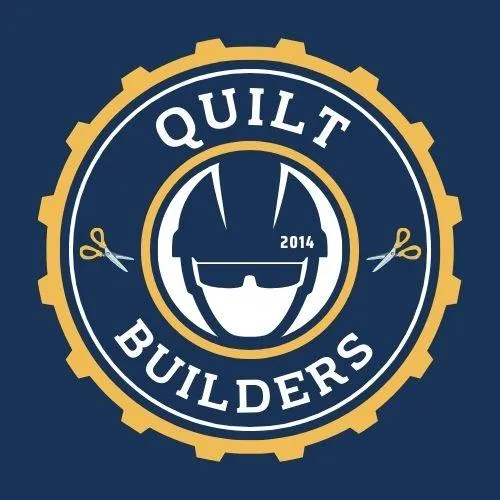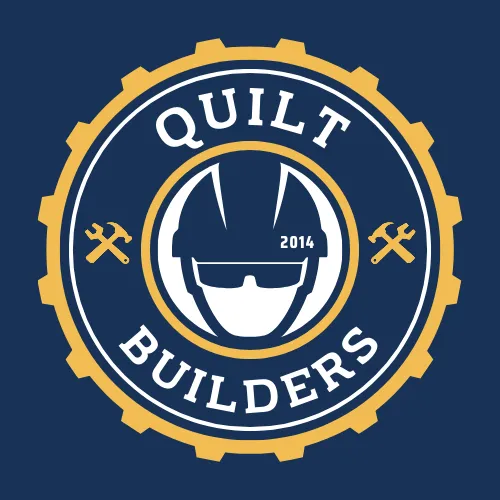
Essential Tools for New Quilters: What You Really Need
Introduction
Welcome to the dynamic world of quilting! Stepping into your own personal quilting adventure can be a pretty big deal–and having the right tools is crucial to your success and enjoyment.
Admittedly, there are any number of useful & fun tools available for sewists & quilters, but the focus of this post will be solely on essential tools you need to get started, ensuring you are well-equipped for your first projects.
Must-Have Quilting Tools
Don’t let this detailed list of essential tools intimidate or overwhelm you. You may find after reading the descriptions & uses of each tool that you already have access to or own several:
Cutting Tools:
Rotary Cutter and Blades:
Description: A rotary cutter is a handheld tool with a circular blade that rolls, allowing you to cut fabric smoothly and precisely.
Uses: Ideal for cutting straight lines and multiple layers of fabric.
Cutting Mat:
Description: A self-healing mat that protects your work surface and prolongs the life of your rotary cutter blade.
Uses: Provides a grid for accurate measuring and cutting.
Fabric Scissors:
Description: Sharp scissors specifically designed for cutting fabric.
Uses: Cutting fabric, trimming threads, and snipping seams.
Measuring and Marking Tools:
Quilter's Rulers:
Description: Clear, grid-marked rulers designed for quilting.
Uses: Accurate measurement and cutting of fabric pieces.
Tape Measure:
Description: A flexible ruler.
Uses: Measuring fabric lengths and quilt dimensions.
Marking Pens and Pencils:
Description: Pens and pencils that can mark fabric without damaging it.
Uses: Marking cutting lines, seam allowances, and quilting patterns.
Sewing Tools:
Sewing Machine:
Description: A basic machine with the features needed for quilting.
Uses: Piecing fabric, quilting layers, and finishing edges.
Thread:
Description: Cotton or polyester thread in various colors.
Uses: Sewing seams, quilting, and binding.
Extra Bobbins:
Description: Small spools for the lower thread in your sewing machine.
Uses: Ensuring consistent stitching.
Having multiple bobbins ready to switch out makes for a smoother, more efficient process–every quilter I know has experienced getting to the end of a long seam, only to realize they had run out of bobbin way back at the beginning! This is one situation that it is better to be prepared to take care of with the least amount of drama or trauma possible
Needles (Machine and Hand-Sewing):
Description: Needles designed for machine and hand quilting.
Uses: Sewing seams, quilting, and finishing edges.
Straight Pins and/or Clips:
Description: Tools for holding fabric pieces together.
Uses: Securing fabric layers and pieces while sewing.
Seam Ripper:
Description: A small tool with a hook blade.
Uses: Removing stitches and correcting mistakes.
Pressing Tools:
Iron and Ironing Board:
Description: A steam iron and a sturdy ironing board.
Uses: Pressing seams, removing wrinkles, and setting stitches.
Basting Tools:
Basting Safety Pins:
Description: Large, curved pins.
Uses: Temporarily holding quilt layers together.
Basting Thread and Needles:
Description: Strong thread and large needles.
Uses: Temporarily stitching quilt layers together.
Optional but Helpful Tools
List of Tools That Are Nice to Have but Not Necessary for Beginners:
Pattern Weights: To hold fabric and patterns in place without pins.
Pin Cushion or Magnetic Pin Tray: For organizing and storing pins.
Pressing Mat: A portable mat for pressing small projects.
Seam Roller: For pressing seams without an iron.
Fabric Glue: Temporary adhesive for fabric pieces.
Basting Spray: Temporary adhesive for quilt layers.
Quilting Gloves: Gloves with grip for better fabric control; also keeps quilts cleaner.
Fabric Markers: Washable markers for temporary fabric marking.
Quilt Design Board or Wall: A surface to arrange and visualize quilt pieces.
Choosing the Right Sewing Machine
Key Features to Look for in a Sewing Machine for Quilting:
Stitch Variety: Basic straight and zigzag stitches.
Durability: A sturdy, reliable machine.
Ease of Use: User-friendly features like automatic threading and bobbin winding.
Recommendations for Beginner-Friendly Sewing Machines:
Brands and Models: Mention reliable brands like Brother, Janome, and Singer, and suggest specific beginner-friendly models.
Maintaining Your Tools
Tips for Keeping Your Tools in Good Condition:
Cleaning and Oiling Your Sewing Machine: Regular maintenance tasks.
Sharpening Rotary Cutter Blades: Replacing dull blades.
Storing Tools Properly: Keeping tools organized and in good condition.
Importance of Regular Maintenance and Cleaning:
Longevity and Performance: Well-maintained tools perform better and last longer.
Budget-Friendly Tool Options: Where to Buy Quilting Tools
Suggestions for Finding Affordable Tools and Materials:
Where to Shop:
Local Quilt Shops: Personalized service and expert advice.
Local Craft Stores: Wide range of supplies.
Local Hardware Stores: Utility items like cutting mats and scissors.
Local Walmarts: Affordable options for basic tools.
Online Stores: Convenience and variety (Amazon, Joann, etc.).
Second-Hand Options: Thrift stores, yard sales, and online marketplaces.
Creating a Quilting Toolkit
How to Organize and Store Your Quilting Tools:
Storage Solutions: Use containers, drawers, and pegboards.
Assembling a Cost-Effective Starter Kit: Focus on essential tools first.
Prioritizing Quality Over Quantity:
Investing in Good Tools: Better tools can make quilting easier and more enjoyable.
Importance of Keeping Your Workspace Tidy & Efficient:
Efficiency and Enjoyment: A tidy workspace promotes productivity and reduces frustration.
Conclusion
Recap the Absolute, Non-Negotiable, Essential Tools:
Rotary Cutter, Cutting Mat, Fabric Scissors, Quilter's Rulers, Sewing Machine, Thread, Needles, Pins, Seam Ripper, Iron.
Encourage Readers to Start Gathering the Right Tools:
Preparation Leads to Success: Having the right tools sets you up for quilting success.
Call to Action:
Share Your Quilting Toolkit with Our Community or Ask Questions: Engage with fellow quilters and seek advice.
For More Information:
Quilting 101: Everything You Need to Begin Your Quilting Journey
Setting Up Your Quilting Space: Tips for Success

